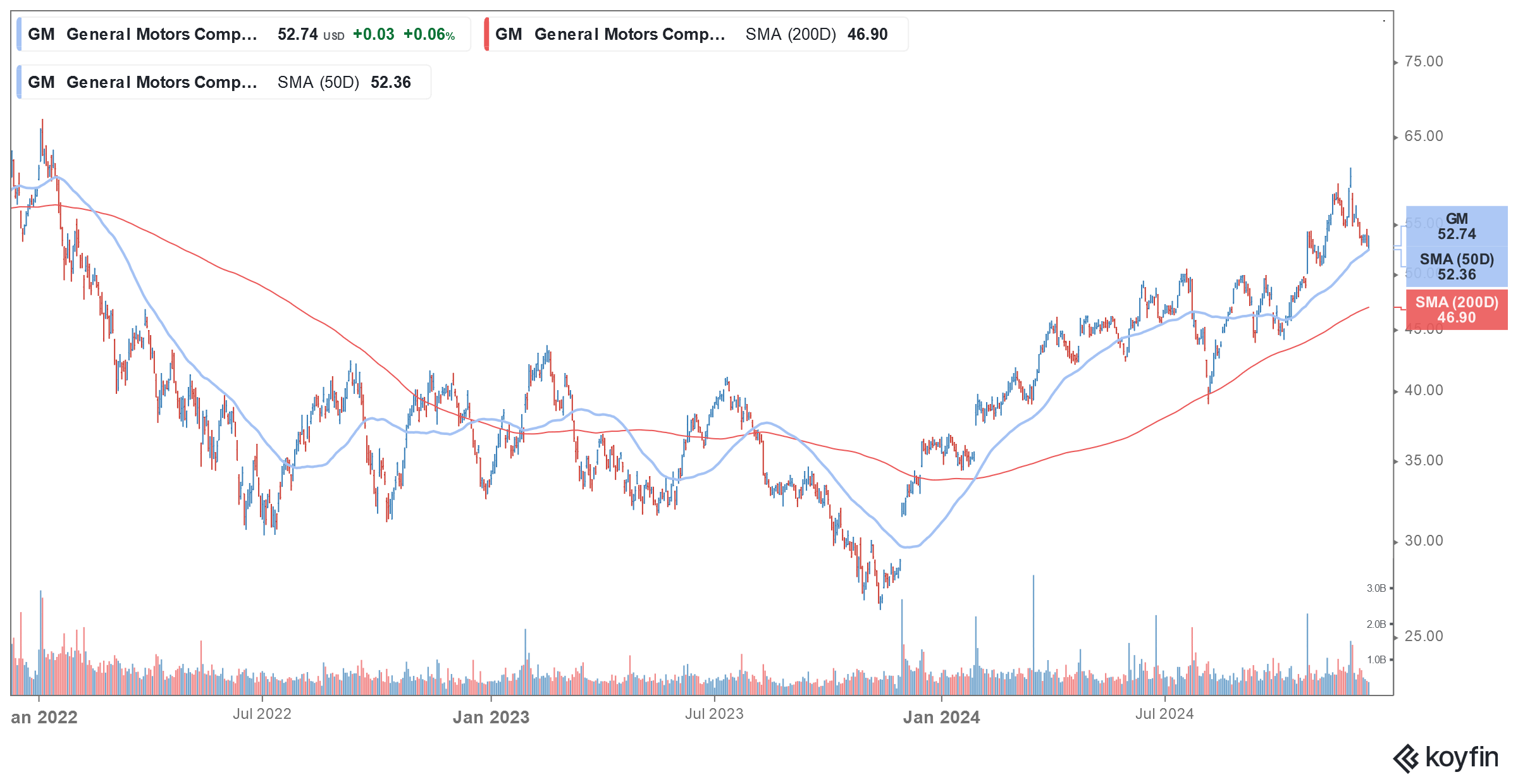GM Exits Cruise Robotaxi Business Amid Perennial Losses and Rising Competition
Please note that we are not authorised to provide any investment advice. The content on this page is for information purposes only.
General Motors (NYSE: GM) has announced that it will exit the Cruise robotaxi business and would instead focus on autonomous driving for personal vehicles. GM’s robotaxi business was burning a lot of cash while the competition in the industry is set to intensify with Tesla launching its Cybercab.
In its release, GM said that it won’t fund the robotaxi business any further “given the considerable time and resources that would be needed to scale the business, along with an increasingly competitive robotaxi market.”
GM Acquired Cruise in 2016
Notably, GM was an early entrant in the robotaxi industry and acquired Cruise in 2016. The company also onboarded third parties like Microsoft and Honda as investors in the self-driving unit. However, GM’s robotaxi operations did not make headway and the company halted the production of its Origin autonomous car in July.
Meanwhile, GM will continue to develop fully autonomous driving technology for personal cars. The decision to quit only robotaxi and not autonomous driving might sound a bit perplexing as autonomous driving software is at the core of robotaxis.
In response to an analyst question on similar lines, GM CEO Mary Barra said, “Cruise was well on its way to a robotaxi business. But when you look at the fact that you’re deploying a fleet, you’re maintaining a fleet, there’s a whole operations piece of doing that and where the vehicles sit on the company’s balance sheet.”
She pointed to the cost of running a robotaxi fleet as well as the capital intensity of the business while stressing that robotaxis is not the “core” business for GM. Incidentally, the announcement comes a couple of months after Tesla unveiled its robotaxi.
Tesla Unveiled Its Cybercab in October
At the “We, Robot” event in October, Tesla unveiled its robotaxi or the Cybercab which is a low two-seater and has no steering wheels or pedals. Tesla CEO Elon Musk is optimistic that the company can sell Cybercab for less than $30,000 even as many analysts doubt that the company can make profits selling the car in that price range.
Forrester principal analyst Paul Mill doubts Tesla would be able to sell Cybercab below $30,000. He said, “It will be extremely difficult for Tesla to offer a new vehicle at that price within that timescale.”
Mill added, “Economies of scale might eventually allow the company to drive costs down to something close to $30,000. Without external subsidies, or Tesla making a loss on every vehicle, it doesn’t seem plausible to launch at anything close to that price this decade.”
GM Expects Annual Cost Savings of $1 Billion
Notably, GM is targeting a fixed cost reduction of $2 billion in 2024 and has been taking several measures to lower its cost base. Last month, it laid off hundreds of employees, the bulk of whom were at its global technical center in Warren, Michigan. The decision to exit the robotaxi business should also be seen in the same light.
GM said that by exiting the robotaxi business it will achieve annual cost savings of over $1 billion. During the call with analysts GM CEO Paul Jacobson said, “This restructuring was not factored into the comments we made at our Investor Day in October regarding our early expectations about 2025 and therefore, would be a source of upside all else being equal.”
During their Q3 2024 earnings call, GM said that it expects its 2025 consolidated profits to be similar to 2024 even as it forecast operating losses in the EV business to narrow by between $2 billion-$4 billion next year.
GM Raised Its 2024 Guidance
GM also raised its 2024 guidance for the third time this year. The Detroit giant forecasted full-year adjusted pre-tax earnings of between $14 billion and $15 billion, up from the previous guidance of between $13 billion and $15 billion. The company also raised its adjusted automotive free cash flow forecast to between $12.5 billion and $13.5 billion, which is significantly higher than the previous guidance of between $9.5 billion and $11.5 billion.
The guidance raise was all the more encouraging as a flurry of automakers including Aston Martin, Volkswagen, Toyota, and Stellantis have cut their respective 2024 outlooks. However, the US automotive market – which accounts for the bulk of GM’s earnings – has been a different game altogether. Both Ford and GM are posting healthy cash flows, thanks to the profits they are making in the legacy ICE (internal combustion engine) business.
Ford Also Wrote Off Its Investment in Autonomous Driving Startup
Meanwhile, it is not only GM that’s having second thoughts about its robotaxi business, and in 2022 Detroit rival Ford also wrote off its $2.7 billion investment in autonomous driving startup Argo AI. Another common trouble for GM and Ford has been their EV business and China operations.
GM Is Restructuring Its China Operations
China has been a particularly tough market for foreign automakers and they have been losing market share to domestic Chinese companies. GM’s China operations also posted a loss in Q3 2024 but the company is not giving up on that market yet.
“We believe that we can turn around the losses, and that’s why we have a series of meetings with our partner to make the hard decisions to get the business to be sustainable and profitable,” said Barra during the earnings call.
That might be easier said than done though as Chinese car buyers have increasingly pivoted to domestic companies at the cost of foreign automakers. GM expects restructuring charges of $5 billion at its China operations, among others due to plant closures and write-downs.
Automakers Are Losing Money in the EV Business
Legacy automakers’ EVs have been quite soft while the losses are mounting. Ford expects its EV business to lose around $5 billion this year on a pre-tax basis and while GM does not specify the EV losses separately the company is also losing a lot of money in that business.
During the Q3 earnings call, GM said that its US EV market share is approaching 10%, and it is the second-biggest player, after market leader Tesla. The company reiterated its previous forecast of producing and wholesaling 200,000 EVs this year and turning around a variable profit in Q4. It expects the operating losses in the EV business to narrow by between $2 billion-$4 billion next year.
Both GM and Ford have scaled back their EV expansion plans amid slow sales and the price war. With Donald Trump set to return as the US president, the outlook for the US EV industry looks hazy at best, as, among other things, his transition team is considering eliminating the EV tax credit.
Meanwhile, markets are giving a thumbs up to GM exiting its robotaxi business and the stock is up around over 1% in premarkets today.






